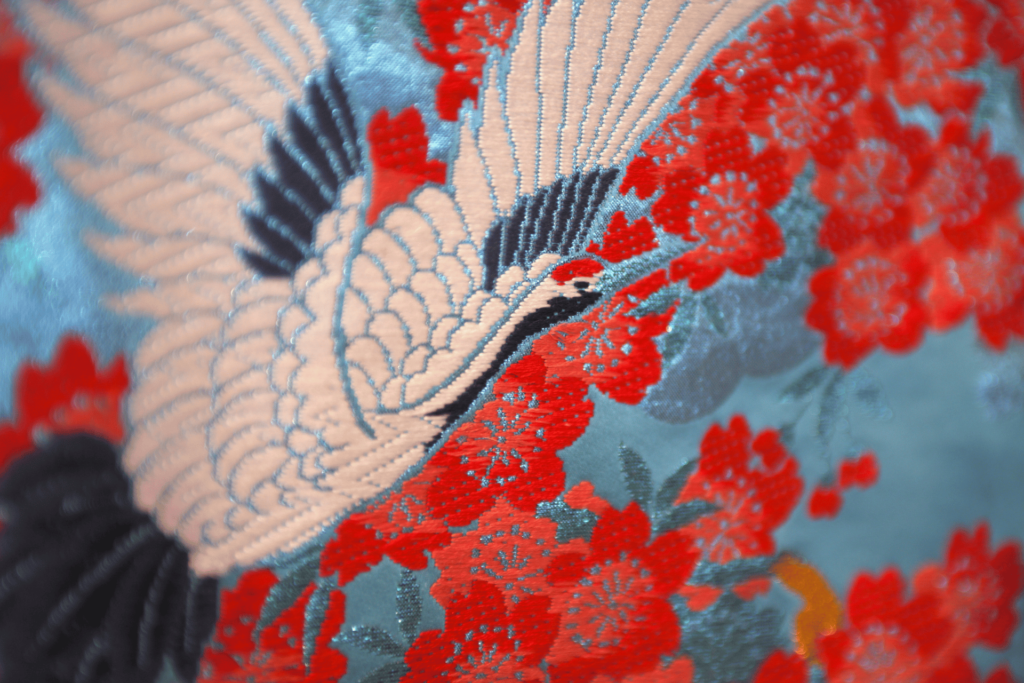
The Symbolic Meaning of Birds in Japanese Kimono Patterns
Birds on Japanese kimonos aren’t just a style choice, they carry deeper symbolic meanings for special occasions
Translated literally to “thing to wear” in English, Japanese kimonos make for a bold fashion statement with their colorful designs and intricate patterns, but aside from personal taste, which design is right for you? While kimonos have gone from being an everyday fashion item in 17th century Japan to modern-day formal wear reserved for special occasions, many of the patterns and motifs often found on kimono robes still carry the same symbolic meanings and greatly affect the message you wish to reflect for specific occasions. Among the various patterns and motifs that commonly appear on kimonos is the use of birds which carry symbolic meanings rooted in Japanese culture, tradition, and myth. In this article, we’ll explore the meanings of seven different birds in Japanese kimono designs to help you decide which design is right for you.
Cranes
Known as “Tsuru” in Japanese, the crane is one of the most often depicted symbols on kimonos. In Japanese culture, it is believed that cranes can live for a thousand years. A representation of living a long, prosperous life, the crane symbolizes longevity and good fortune. When depicted in pairs, cranes can also represent a long marriage.
Pheasants
Pheasants, or “Kiji”, are birds of the springtime. Spring, being a time of year for new growth, makes the pheasant a symbol of abundance, prosperity, and promise. A pheasant adorning a Japanese kimono signals hope and faith that the future will provide plentiful returns.
Phoenix
“Hō-ō” in Japanese, the phoenix is a mythical bird often associated with renewal and immortality in many cultures. On a Japanese kimono, they represent the emergence of a great ruler bringing peace to the country, making the phoenix a symbol of peace and happiness.
Peacocks
Being prized for their stunning beauty and majesty, peacocks, known as “Kujaku”, make for popular kimono imagery given their intricate feather patterns. They symbolize faith, love, goodwill, and kindness. Also, as peacocks are in the same long-tailed bird family as pheasants, they’re also often associated with fertility and prosperity.
Mandarin Duck
“Oshidori”, or Mandarin ducks, are symbols of good luck and eternal love. Often depicted in pairs, Mandarin ducks represent a harmonious and long-lasting relationship, making them a popular choice for weddings and celebrations of love.
Hawks
Hawks, or “Taka”, represent the highest-ranking warrior class among birds of prey. On a kimono, hawks can symbolize strength, courage, and warrior-like qualities, making hawks a great motif for celebrations or events where power and dignity are highly valued.
Sparrows
Beloved for their cheerful chirping and playfulness, sparrows, or “Suzume”, represent togetherness, harmony, and adaptability. This makes sparrows a perfect addition to a kimono depicting a natural scene among other motifs such as flowers or trees.
Final Thoughts
Patterns and motifs like birds on Japanese kimonos don’t just serve as aesthetic additions to a beautiful design, they carry deep, symbolic meanings for the wearer and the occasion for celebration. They’re reminders of the connection between the natural world and the human condition, a timeless story told through the threads of traditional Japanese kimonos.
With a little background knowledge on the symbolic meaning of birds on Japanese kimonos, check out our selection of upcycled kimonos with embroidered designs from Dress Your Color by clicking the link below!
Sources
“History and Characteristics of Japanese Patterns | December 2022 | Highlighting Japan.” Www.gov-Online.go.jp, www.gov-online.go.jp/eng/publicity/book/hlj/html/202212/202212_01_en.html. Accessed 3 Apr. 2024.
“Kimono Patterns―12 Oshidori (Mandarin Duck): an Auspicious Symbol of Eternal Love|Kateigaho International Japan Edition- Japanese Culture, Arts, Lifestyle Magazine.” Kateigaho International Japan Edition- Japanese Culture, Arts, Lifestyle Magazine, int.kateigaho.com/articles/tradition/patterns-12/#:~:text=Oshidori%20(Mandarin%20duck)%EF%BC%9AAn. Accessed 3 Apr. 2024.
“Kimono Symbol Meanings.” Hunted and Stuffed, 2019, www.huntedandstuffed.com/pages/kimono-symbol-meanings.
Nitanai, Keiko. Kimono Design: An Introduction to Textiles and Patterns. Google Books, Tuttle Publishing, 16 May 2017, books.google.com/books?hl=en&lr=&id=v-bhDgAAQBAJ&oi=fnd&pg=PT9&dq=symbolic+meaning+of+birds+Japanese+Kimono&ots=Ht-8zcHbqA&sig=zmbqyAOssF2_TIG9aW7TP5v24TA#v=twopage&q&f=false. Accessed 3 Apr. 2024.
“Nuance in Nature: Birds and Flowers in Japanese Textile Design.” Risdmuseum.org, Feb. 2007. Accessed 2 Apr. 2024.
Saddhono, Kundharu & Widodo, Sahid & al Makmun, Taufiq & Tozu, Masakatsu. (2014). The Study of Philosophical Meaning of Batik and Kimono Motifs to Foster Collaborative Creative Industry. Asian Social Science. 10. 51-61. 10.5539/ass.v10n9p52.
“Story of Kimono Pattern(Animal Patterns) – Kimonoya Japan.” Www.kimonoya-Japan.net, www.kimonoya-japan.net/page/25.
